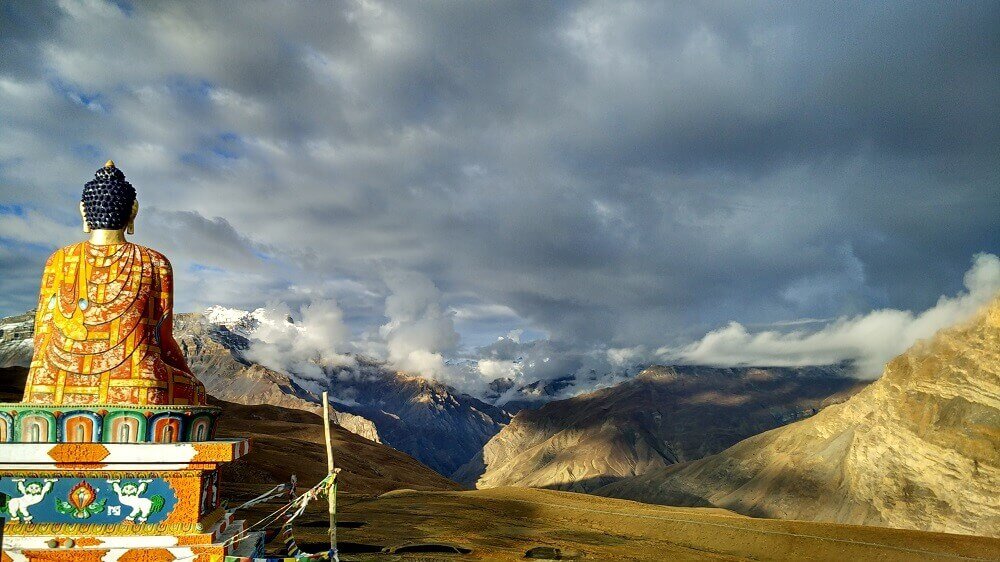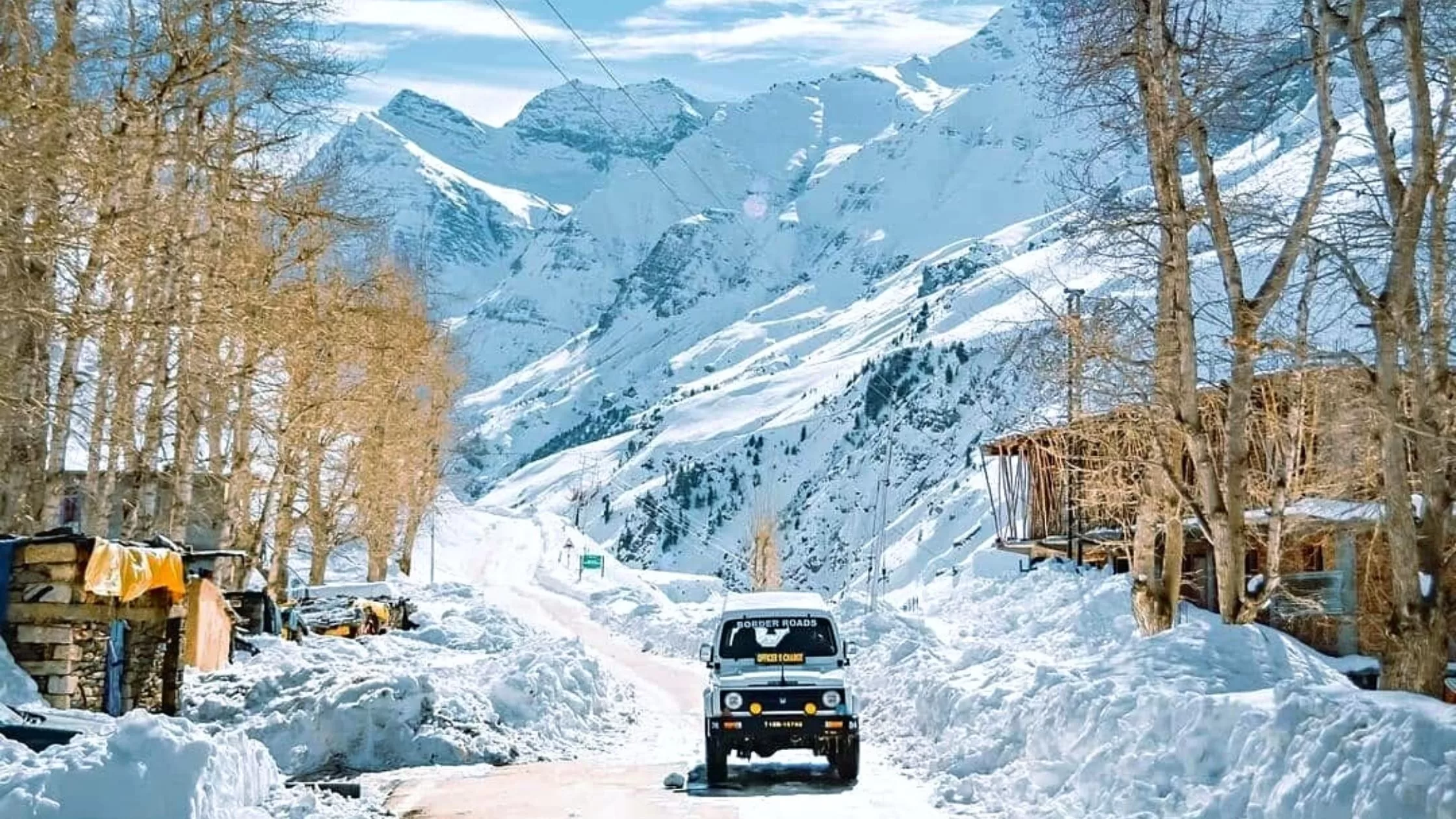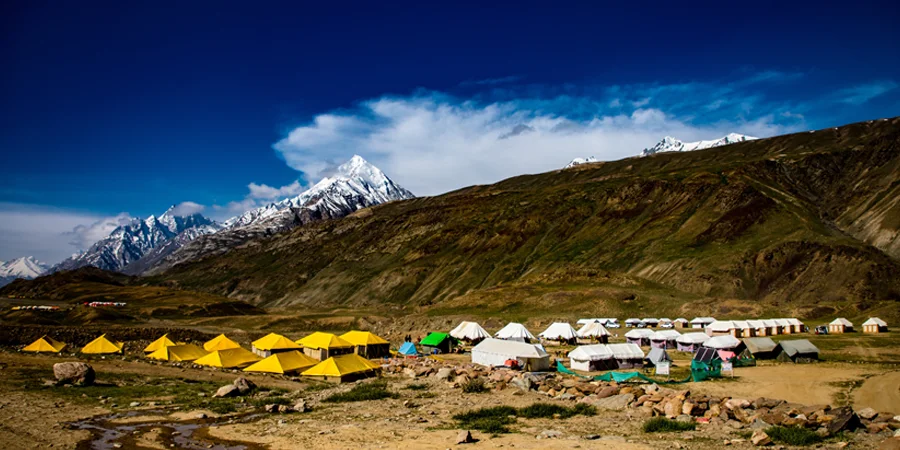Lost in Spiti: An Unforgettable Journey Through the Himalayas
Published on April 29, 2025
Spiti, Nestled in the remote corners of Himachal Pradesh, Spiti Valley is a high-altitude desert that offers an unparalleled blend of adventure, spirituality, and natural beauty. Often referred to as "Little Tibet," Spiti is characterized by its rugged landscapes, ancient monasteries, and vibrant Tibetan culture. Whether you're seeking a thrilling Spiti Valley Trekking experience or a serene Spiti Valley Tour, this destination promises memories that last a lifetime

Planning Your Spiti Valley Adventure
Best Time to Visit
The ideal time to embark on a Spiti Valley Travel is between June and September. During these months, the weather is pleasant, and the roads are accessible, making it perfect for Spiti Valley Tours and treks. Winter months, from December to February, are for the daring, offering snow-covered landscapes and the chance to spot the elusive snow leopard.
How to Reach Spiti Valley
-
Via Shimla: This route is open year-round and takes you through Kinnaur, offering a gradual ascent that's ideal for acclimatization.
-
Via Manali: Open from June to October, this route is shorter but includes challenging terrains like the Rohtang and Kunzum Passes.
Must-Visit Destinations in Spiti
Key Monastery
Perched atop a hill, Key Monastery is the largest in Spiti and serves as a religious training center for Lamas. Its ancient murals and thangkas are a testament to the valley's rich Buddhist heritage.
Chandratal Lake
Known as the "Moon Lake," Chandratal is a crescent-shaped lake surrounded by snow-capped peaks. It's a popular spot for Spiti Valley Camping and offers breathtaking views, especially during sunrise and sunset.
Tabo Monastery
Often called the "Ajanta of the Himalayas," Tabo Monastery is renowned for its exquisite frescoes and ancient scriptures. It's one of the oldest functioning Buddhist enclaves in India.

Trekking Through Spiti
For adventure enthusiasts, Spiti Valley Trekking offers trails that traverse high-altitude deserts, ancient villages, and pristine lakes. Popular treks include:
-
Pin Parvati Pass Trek: A challenging trek that connects the lush Parvati Valley to the barren landscapes of Spiti.
-
Hampta Pass Trek: Ideal for beginners, this trek offers a dramatic shift from green valleys to arid deserts.
-
Chandratal Lake Trek: A moderate trek leading to the mesmerizing Moon Lake, perfect for those looking to combine trekking with camping.
Adventure Activities in Spiti
Beyond trekking, Spiti offers a plethora of adventure activities:
-
Mountain Biking: Navigate through rugged terrains and high mountain passes for an adrenaline rush.
-
River Rafting: Experience the thrill of rafting in the Spiti and Pin rivers, surrounded by stunning landscapes.
-
Yak Safaris: A unique way to explore the valley, yak safaris offer a glimpse into traditional modes of transport.

Accommodation: Where to Stay
Spiti offers a range of accommodations to suit every traveler:
-
Homestays: Experience authentic Spitian hospitality and immerse yourself in local culture.
-
Guesthouses: Comfortable stays with basic amenities, ideal for budget travelers.
-
Luxury Camps: For those seeking comfort amidst nature, luxury camps near Chandratal Lake provide a unique experience.
Culinary Delights: Taste of Spiti
Spitian cuisine is a delightful blend of Tibetan and Indian flavors. Don't miss out on
-
Thukpa: A hearty noodle soup perfect for the cold climate.
-
Momos: Steamed dumplings filled with vegetables or meat.
-
Butter Tea: A traditional beverage made with tea leaves, yak butter, and salt.

Cultural Insights: Embracing Spitian Traditions
Spiti's culture is deeply rooted in Tibetan Buddhism. The valley is dotted with ancient monasteries, and festivals like the Chaam Dance Festival offer a vibrant display of local traditions. Engaging with locals through homestays or community programs provides a deeper understanding of their way of life.
Preparing for Your Spiti Valley Tour
Essentials to Pack
-
Warm Clothing: Temperatures can drop significantly, especially at night.
-
Sunscreen and Sunglasses: The high altitude increases UV exposure.
-
First Aid Kit: Include medications for altitude sickness.
-
Reusable Water Bottle: Stay hydrated and reduce plastic waste.
Health Precautions
Acclimatization is crucial. Spend a day or two at moderate altitudes before ascending higher. Stay hydrated and avoid strenuous activities initially.
Exploring the Natural Wonders
Spiti's landscape is a canvas painted with rugged mountains, deep gorges, and pristine rivers. The Pin Valley National Park is a haven for wildlife enthusiasts, home to the elusive snow leopard and a variety of alpine flora. Chandratal Lake, with its crescent shape and crystal-clear waters, reflects the surrounding peaks, creating a mesmerizing sight. The valley's unique topography offers countless opportunities for trekking and photography, making it a paradise for nature lovers.

Immersing in Local Culture
The culture of Spiti is deeply rooted in Tibetan Buddhism. Villages like Langza, Hikkim, and Komic offer a glimpse into the traditional lifestyle of the Spitian people. Visitors can stay in homestays, participate in local festivals, and even try their hand at traditional crafts. The Losar Festival, marking the Tibetan New Year, is celebrated with much fervor, showcasing traditional dances, music, and rituals.
Planning Your Spiti Valley Tour
Embarking on a Spiti Tour Package requires careful planning. The valley is accessible via two main routes: the Shimla-Kinnaur route, which is open year-round, and the Manali route, accessible from June to October. Travelers should be prepared for high-altitude conditions and limited amenities. It's advisable to carry essential medications, warm clothing, and ensure your vehicle is well-maintained for the challenging terrains.
Capturing Memories
Spiti Valley is a photographer's paradise. The stark landscapes, ancient monasteries, and vibrant festivals offer countless opportunities for capturing stunning images. Whether it's the golden hues of sunrise over the mountains or the intricate details of monastery murals, every moment in Spiti is picture-worthy.

Prehistoric and Ancient Times
Archaeological findings indicate that Spiti Valley has been inhabited for thousands of years. Notably, the valley is renowned for its ancient rock art, attributed to the pre-Buddhist Khasa people. These artworks, some dating back nearly 3,000 years, provide insights into the region's early inhabitants and their way of life. The rock art has been categorized into periods ranging from the Late Bronze Age (c.1500–800 BCE) to the Late Historical Period (post-1300 CE) .
The Buddhist Influence and Monastic Establishments
Buddhism made its indelible mark on Spiti during the Second Diffusion of Buddhism into Tibet. This period saw the establishment of several monasteries, which became centers of learning and spirituality. Notable among these is the Tabo Monastery, founded in 996 CE, often referred to as the "Ajanta of the Himalayas" due to its exquisite murals and ancient scriptures. Another significant establishment is the Lhalung Monastery, also known as the Sarkhang or Golden Temple, founded in the 10th century by the Tibetan translator Rinchen Zangpo
Medieval Period: Dynastic Rules and Autonomy
In the 10th century, Spiti became part of the kingdom of Ngari Khorsum, established by Kyide Nyimagon of the Tibetan royal lineage. After his death, Spiti was governed by his youngest son, Detsukgon, linking its history closely with that of Ladakh. Local rulers, known as Nonos, administered the region, either as descendants of native families or as appointees from Ladakh. Spiti enjoyed periods of autonomy, especially when Ladakh's central authority weakened. However, it also faced invasions, such as the one by Raja Man Singh of Kullu in the late 17th century .

Colonial Era: British Administration
The Treaty of Amritsar in 1846 marked a significant shift in Spiti's governance. Under this treaty, Spiti, along with Lahaul, was separated from Ladakh and came under direct British administration. Initially, local administration was entrusted to the Wazir of Bushahr, who paid a nominal revenue to the British. By 1849, Spiti was directly under the control of the Assistant Commissioner of Kullu. The British period also saw infrastructural developments, such as the construction of the Attargu suspension bridge in 1911, connecting Spiti Valley with Pin Valley
Post-Independence Developments
After India's independence, Spiti underwent administrative reorganization. In 1960, Lahaul and Spiti were merged to form a single district, with Kaza as the administrative center for Spiti. The district became part of Himachal Pradesh in 1966 following the Punjab Reorganisation Act. The annexation of Tibet by the People's Republic of China in 1951 turned Spiti into a sensitive region, prompting the Indian government to develop road connectivity during the 1950s and 60s. By the 1970s, Spiti had road links to Manali and Shimla, facilitating better access and integration with the rest of the country
A journey through Spiti is more than just a trip; it's an exploration of nature's raw beauty and humanity's enduring spirit. Whether you're on a Spiti Tour Package seeking adventure or a tranquil Spiti Valley Holiday, the memories forged here will beckon you back time and again.
Frequently Asked Questions:
Q1: What is the best time to visit Spiti Valley?
A: The ideal time is from June to September when the weather is pleasant and roads are accessible.
Q2: Is a permit required for Spiti Valley?
A: Indian nationals don't need a permit, but foreign nationals require an Inner Line Permit to visit certain areas.
Q3: How many days are sufficient for a Spiti Valley Tour?
A: A minimum of 8-10 days is recommended to explore the valley thoroughly.
Q4: Are there ATMs in Spiti Valley?
A: ATMs are scarce. It's advisable to carry sufficient cash, especially in smaller denominations.
Q5: Is mobile connectivity available?
A: Connectivity is limited. BSNL has the widest coverage, but it's best to inform loved ones about potential communication gaps.
Q6: What are the accommodation options?
A: Options range from homestays and guesthouses to luxury camps, catering to various budgets.
Q7: Is Spiti Valley safe for solo travelers?
A: Yes, Spiti is generally safe. However, always inform someone about your itinerary and check local advisories.
Q8: Can I self-drive to Spiti?
A: Experienced drivers can undertake the journey, but be prepared for challenging terrains and ensure your vehicle is well-maintained.
Q9: Are there medical facilities in Spiti?
A: Basic medical facilities are available in towns like Kaza. For serious emergencies, evacuation to larger cities may be necessary.
Q10: What should I pack for the trip?
A: Essentials include warm clothing, sturdy footwear, personal medications, sunscreen, and a first aid kit.


.jpg)
